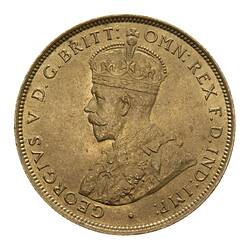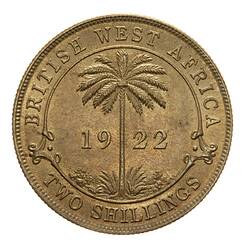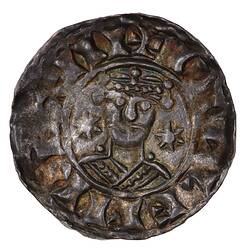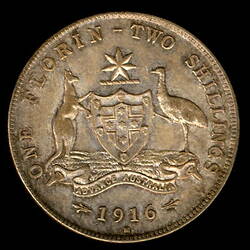Summary
2 Shillings, Issued by, British West Africa, 1922
Minted by Royal Mint, London
Struck in brass
Obverse Description
Crowned and draped bust of the King facing left, the King is wearing the Imperial Crown and the ermine Robe of State, the Collar of the Most Noble Order of the Garter, and the Badge of the Most Honourable Order of the Bath; around, GEORGIVS V D.G. BRITT: OMN: REX F.D. IND: IMP:; artist's initials BM on bust truncation
Reverse Description
At centre, dividing the date, 1922, a palm tree; around outside a circle broken be decorative extensions adjacent to the date, BRITISH WEST AFRICA TWO SHILLING
Edge Description
Milled
Significance
Fluctuation in demand for coinage, combined with expansion of trade and increase in prices at the end of World War I saw the adoption of low denomination paper money in British West Africa. Silver soon rose to a premium and largely dissapeared from circulation. In 1919 the currency Board saught to introduce a new metal for the denominations then struck in silver. The metal chosed was an alloy of 79% copper, 20% zinc and 1% tin. In 1920 the price of silver had reached the point where 20 shillings face value of silver coin struck at the sterling silver lever was worth over 27 shillings for its silver content. Due to demands for their own new alloy coinage needs the Royal Mint was not able to assist the Board with their requests for a coinage in the new btass alloy. Private firms were approached and struck coins from dies supplied by the Royal Mint. In 1922 the Royal Mint was again able to fill orders. In Australia the price rise of silver also saw reaction with plans to drop from the sterling silver level, the star patterns of 1920 and the Sydney mint 1921 star shilling reflect this, but silver prices dropped and Australia remained on sterling silver until after World War II.
More Information
-
Collecting Areas
-
Acquisition Information
Transfer from National Gallery of Victoria (NGV), 15 Mar 1976
-
Date Issued
1922 AD
-
Issued By
-
Mint
-
Artist
-
Denomination
-
Material
Tin-Brass
-
Axis
12
-
Classification
-
Category
-
Discipline
-
Type of item
-
Dimensions
28.5 mm (Outside Diameter), 11.414 g (Weight)
-
Shape
Round
-
References
KM#13b Vice 14 Vice, David, The Coinage of British West Africa & St Helena, p. 89-99
[Book] Vice, David. 1983. The Coinage of British West Africa & St. Helena 1684 - 1958.
[Book] Bruce, Colin R. 2009. 2009 Standard Catalogue of World Coins 1901 - 2000.
-
Keywords







